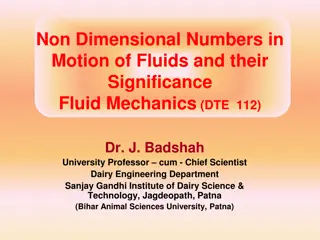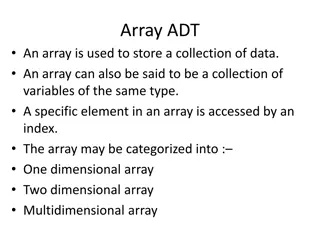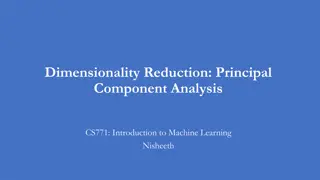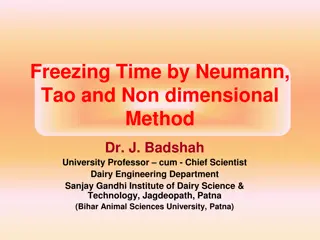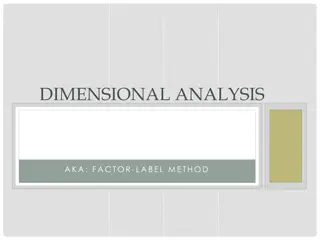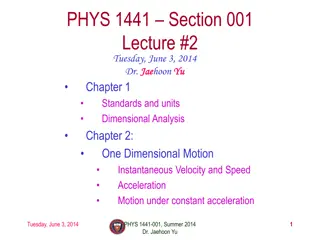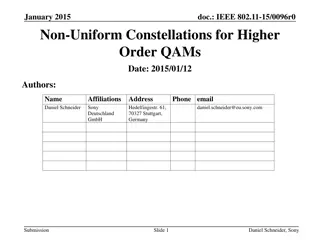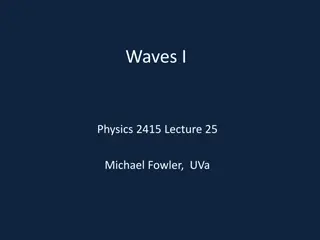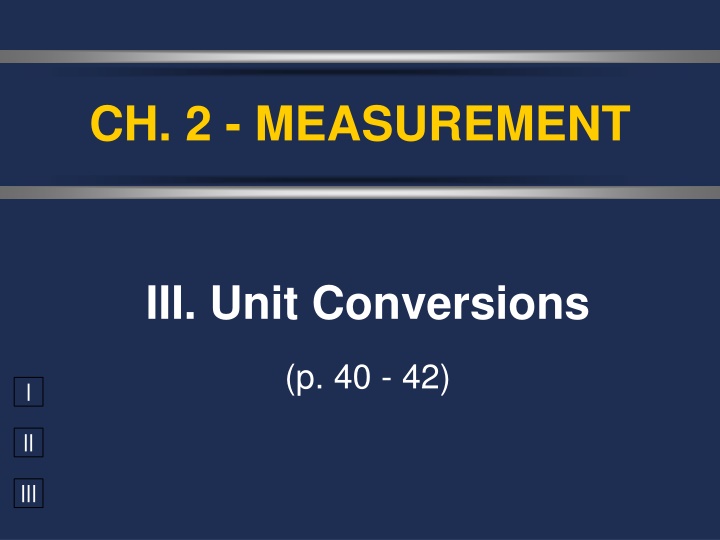
Unit Conversions and Dimensional Analysis Techniques for Measurement
Learn about unit conversions using SI prefixes, dimensional analysis with the factor-label method, and practical application examples for converting different units of measurement in this comprehensive guide.
Download Presentation

Please find below an Image/Link to download the presentation.
The content on the website is provided AS IS for your information and personal use only. It may not be sold, licensed, or shared on other websites without obtaining consent from the author. If you encounter any issues during the download, it is possible that the publisher has removed the file from their server.
You are allowed to download the files provided on this website for personal or commercial use, subject to the condition that they are used lawfully. All files are the property of their respective owners.
The content on the website is provided AS IS for your information and personal use only. It may not be sold, licensed, or shared on other websites without obtaining consent from the author.
E N D
Presentation Transcript
CH. 2 - MEASUREMENT III. Unit Conversions (p. 40 - 42) I II III
A. SI Prefix Conversions 1. Find the difference between the exponents of the two prefixes. 2. Move the decimal that many places. To the left or right?
A. SI Prefix Conversions 0.532 532 m = _______ km NUMBER UNIT NUMBER UNIT =
A. SI Prefix Conversions Prefix Symbol Factor mega- kilo- BASE UNIT M k --- 106 103 100 deci- centi- milli- micro- nano- pico- d c m 10-1 10-2 10-3 10-6 10-9 10-12 move right move left n p
A. SI Prefix Conversions ______________ m 0.2 32 1) 20 cm = 2) 0.032 L = ______________ mL 45,000 ______________ nm 0.0805 3) 45 um = 4) 805 dm = ______________ km
B. Dimensional Analysis The Factor-Label Method Units, or labels are canceled, or factored out g = 3 g cm 3 cm
B. Dimensional Analysis Steps: 1. Identify starting & ending units. 2. Line up conversion factors so units cancel. 3. Multiply all top numbers & divide by each bottom number. 4. Check units & answer.
B. Dimensional Analysis Lining up conversion factors: 1 in = 2.54 cm 2.54 cm 2.54 cm = 1 1 in = 2.54 cm 1 in 1 in 1 =
B. Dimensional Analysis How many milliliters are in 1.00 quart of milk? qt mL 1 L 1000 mL 1 L 1.00 qt = 946 mL 1.057 qt
B. Dimensional Analysis You have 1.5 pounds of gold. Find its volume in cm3if the density of gold is 19.3 g/cm3. lb cm3 1 cm3 19.3 g 1 kg 2.2 lb 1000 g 1 kg 1.5 lb = 35 cm3
B. Dimensional Analysis How many liters of water would fill a container that measures 75.0 in3? in3 L 1 L (2.54 cm)3 (1 in)3 75.0 in3 = 1.23 L 1000 cm3
B. Dimensional Analysis 5) Your European hairdresser wants to cut your hair 8.0 cm shorter. How many inches will he be cutting off? cm in 8.0 cm 1 in 2.54 cm = 3.2 in
B. Dimensional Analysis 6) Taft football needs 550 cm for a 1st down. How many yards is this? cm yd 1 ft 12 in 1 yd 3 ft 1 in 550 cm = 6.0 yd 2.54 cm
B. Dimensional Analysis 7) A piece of wire is 1.3 m long. How many 1.5-cm pieces can be cut from this wire? cm pieces 1 piece 1.5 cm 100 cm 1 m 1.3 m = 86 pieces




